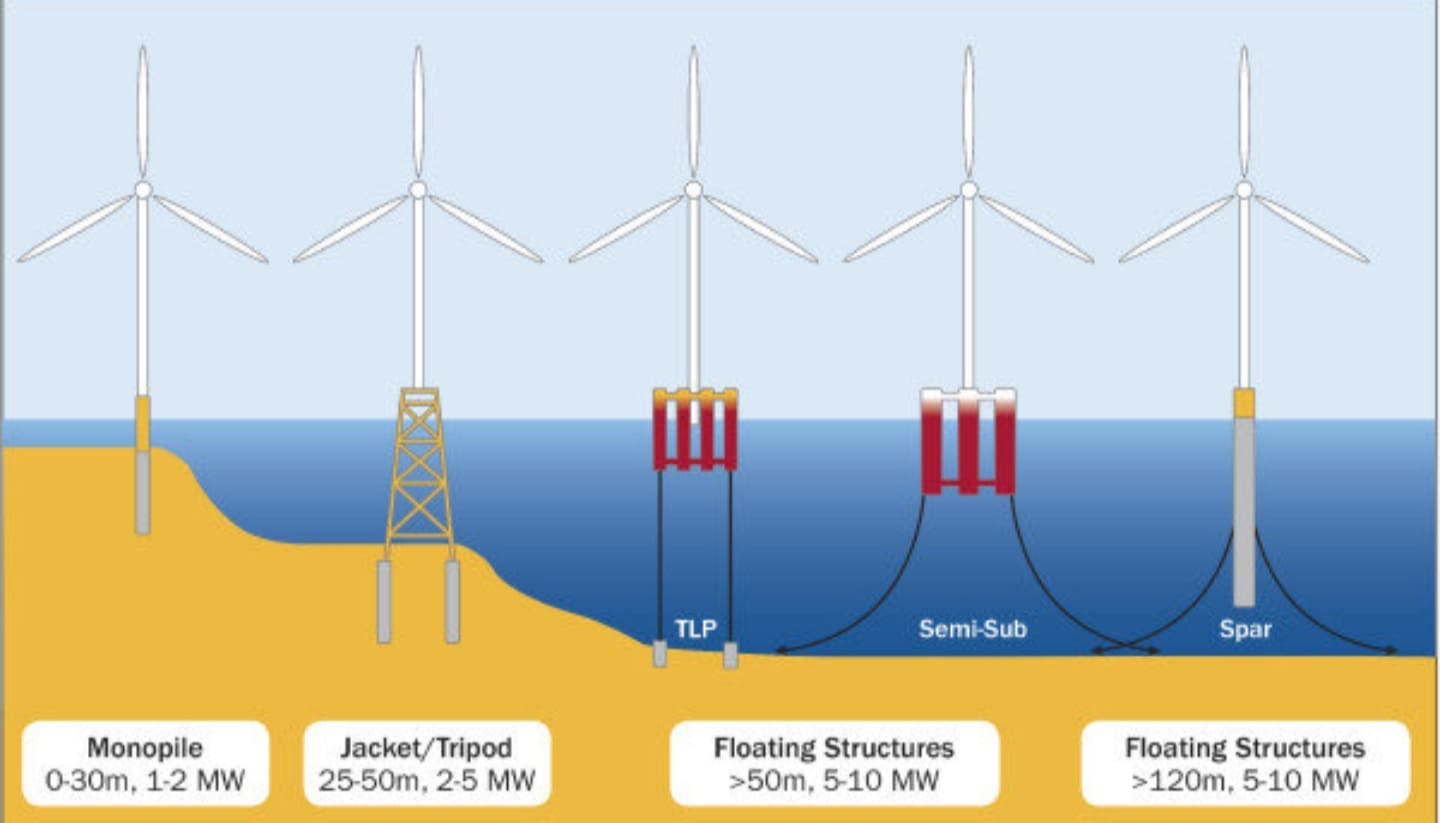Kalbarri is on the radar for 200 offshore wind turbines on our beautiful coastline. The natural ecological landscape will be changed forever with plans from Danish company Copenhagen Energy to build four offshore windfarms in WA just 15 kilometres off the coastline.
Exclusion zones will apply 500 metres around the Turbines.
Currently, the typical offshore wind turbine has a tower height ranging from 80 to 100 meters (262 to 328 feet) and a rotor diameter between 120 to 180 meters (394 to 591 feet). These dimensions result in a total height, from the water’s surface to the tip of the blade, of around 150 to 200 meters (492 to 656 feet).
However, there are even larger offshore wind turbines being developed. Some upcoming projects are expected to feature turbines with rotor diameters exceeding 200 meters (656 feet), which could reach a total height of over 250 meters (820 feet).
Offshore windfarms have emerged as a promising source of renewable energy, providing clean electricity and helping to combat climate change. However, like any large-scale development, they come with potential environmental consequences. While offshore windfarms offer numerous benefits, it is essential to acknowledge and address the potential dangers they pose to marine life, including animals, birds, fish, whale migration, and the ocean floor and coral.
1. Marine Animals:
Offshore windfarms can impact marine animals in various ways. The construction phase may create noise and physical disturbances that can disorient marine species, including whales, dolphins, and other marine mammals. In some cases, this could lead to strandings and habitat displacement, affecting their ability to find food, reproduce, and communicate.
2. Birds:
Birds, especially migratory species, can be at risk of colliding with wind turbines, leading to injury or death. While modern wind turbine designs aim to minimize bird strikes, certain locations and migration routes can still pose a significant risk to avian populations.
3. Fish:
The installation of wind turbine foundations and associated underwater cables can alter the seabed, affecting the habitats of many fish species. Disruption of these habitats can reduce fish populations and potentially affect the balance of marine ecosystems. On the other hand, wind turbines can also serve as artificial reefs, attracting certain species, which might impact the local food web dynamics.
4. Whale Migration:
Offshore windfarms could interfere with whale migration patterns, as some species rely on the Earth’s magnetic field for navigation. The electromagnetic fields generated by undersea cables may disrupt these natural navigation systems, leading to unintended consequences on their migration routes.
5. Ocean Floor and Coral:
The installation of offshore wind turbines necessitates drilling and seabed anchoring, which can disturb the ocean floor and disrupt fragile ecosystems like coral reefs. Sediment resuspension during construction can also smother benthic organisms, affecting their survival and the overall health of the marine environment.
Despite these concerns, it’s important to recognize that the impact of offshore windfarms on marine life varies depending on several factors, such as location, design, and mitigation measures employed. Developers and regulators are increasingly incorporating environmental impact assessments to identify potential risks and implement strategies to minimize harm to marine ecosystems.
Mitigation measures can include proper planning and placement of windfarms to avoid critical habitats, implementing seasonal construction restrictions to protect sensitive species during crucial periods, and employing technologies that reduce underwater noise and electromagnetic fields.
Furthermore, ongoing research and collaboration between environmental organizations, the renewable energy industry, and governmental bodies are essential to understanding the long-term effects of offshore windfarms on marine life and refining best practices for sustainable development.
While offshore windfarms offer significant benefits in combating climate change, it is crucial to remain vigilant about their potential impact on marine life. By continuing to prioritize environmental
considerations and employing responsible practices. Can we strike a balance between renewable energy generation and the preservation of our precious marine ecosystems off Kalbarri.
Does 200,000 visitors want to view structural clutter or will they go somewhere else for their holidays. Different people may have different opinions on what constitutes a visually pleasing view. Developers of offshore wind farms take into account the concerns and preferences of various stakeholders, including local communities, regulatory bodies, and environmental groups. This involvement helps shape the design and placement of turbines to mitigate visual impacts.

